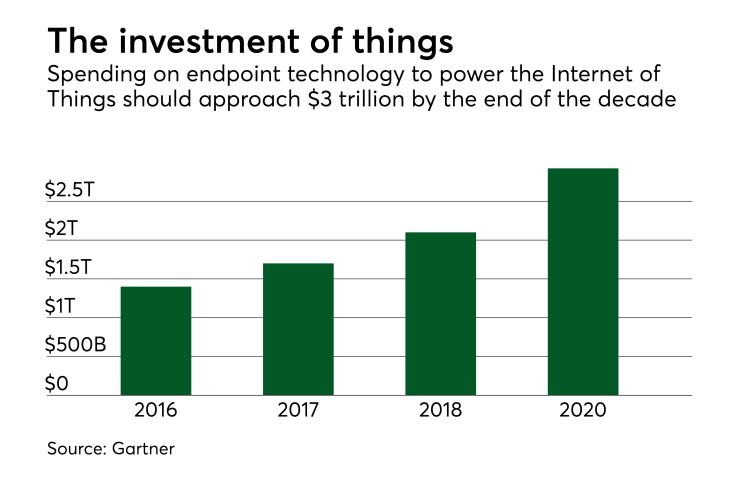Financial organizations are under more pressure than ever before, with the security of assets at constant risk from attack. This pressure is amplified by the requirement for a more sustainable infrastructure, increased efficiencies and reduced environmental impact.
Compliance is also a critical issue since stringent standards are set by regulators and audits must be completed successfully. Not to mention the requirement for smooth continuation of services, no matter what external impact to the organization.
Financial institutions are forward-thinking in their approach to utilizing the so-called internet of things (IoT) to their advantage. But could there be a better way of operating using true system integration?

Although we live in what we consider a "connected" world where there are more smart devices than ever before, the reality is we are still disconnected. There are a number of reasons for this.
The number of connected devices in the world was said to be 23.14 billion in 2018, but what are these connected to? In terms of security, why aren't these devices inextricably linked to site access? Why can’t we use telemetry data to define access or automate and adjust access requirements based on any number of secure inputs from around an organization?
There are some devices that are ahead of the curve that will claim an element or all of this, but in this world of connected devices, why isn’t it the norm?
Research shows the global electronic access control systems market is expanding rapidly, with forecast growth of more than 6% between 2017 and 2022. Two decades of growth in the electronic access control sector have led to a rise in system integrators, a provider in the market of "integrated solutions."
But in reality, the solutions often provided only "integrate" on a basic level, and leave out many system inputs that could support greater efficiency and ultimately greater outputs.
True integration of systems is rare. So, this gave rise to the data company, the middleware provider, that sell only the means to make things talk rather than the "things" themselves — complicated professional services, process and workflow design, APIs, SDKs and direct programming, design specifications that eat up resources before anyone even writes a line of code.
Therefore, we live in a connected but very disconnected world. The concept of "integrated thinking" is a mindset to help us move forward with a philosophy that because it should it can, not because it can it should.
If a customer recognizes a need for two separate systems to talk, then a manufacturer's responsibility is to ensure that they already had that in mind and that the path to get there is simple. Not a company line of "We have an API/SDK, you can integrate," but rather a statement of "We built the solution to integrate and we will make sure it does."
Integrated thinking is a pledge to the API-first thought process. If we think about connecting the solution holistically throughout the design, engineering, sales and support process, and we adopt an integrated-thinking relationship marketing strategy, then we will achieve truly connected status and we will build smart Infrastructure solutions alongside our clients.





